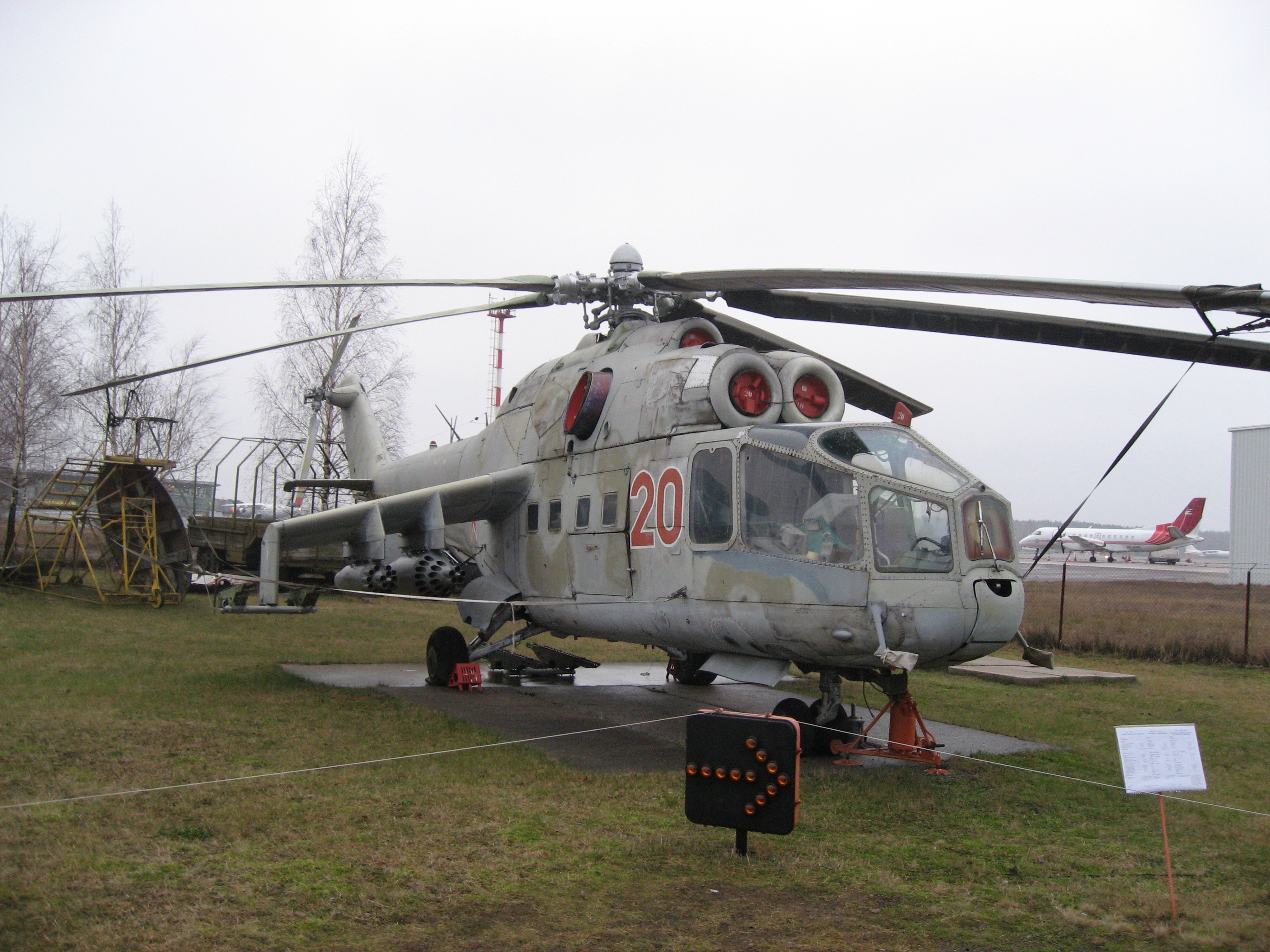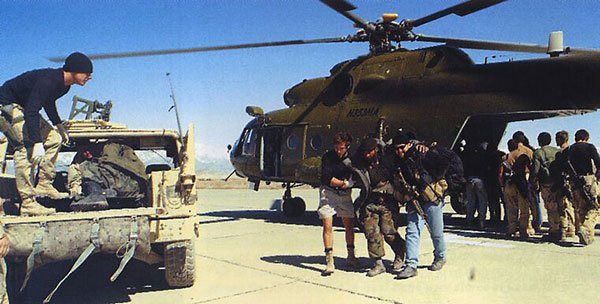|
Russian Helicopters
JSC Russian Helicopters (russian: Вертолёты России ''Vertolyoty Rossii'') is a helicopter design and manufacturing company headquartered in Moscow, Russia. The company designs and manufactures civilian and military helicopters. The company's principal shareholder is Rostec. It is the world's 24th-largest defence contractor measured by 2012 (its best year in the 21st century) defence revenues, and the second-largest based in Russia (after Almaz-Antey). History The company attempted to stage an IPO on the London Stock Exchange in May 2011, but failed to fill the order book at the expected valuation of $2 billion. In 2011 Russian Helicopters and the Italian company AgustaWestland agreed to establish HeliVert, a joint company, in order to start production in Russia of the AW139 twin-engine multipurpose helicopter. The production plant is located in Tomilino, Moscow Region. In 2016 the company delivered 189 aircraft to customers in 13 countries. In the same year, i ... [...More Info...] [...Related Items...] OR: [Wikipedia] [Google] [Baidu] |
Joint-stock Company
A joint-stock company is a business entity in which shares of the company's stock can be bought and sold by shareholders. Each shareholder owns company stock in proportion, evidenced by their shares (certificates of ownership). Shareholders are able to transfer their shares to others without any effects to the continued existence of the company. In modern-day corporate law, the existence of a joint-stock company is often synonymous with incorporation (possession of legal personality separate from shareholders) and limited liability (shareholders are liable for the company's debts only to the value of the money they have invested in the company). Therefore, joint-stock companies are commonly known as corporations or limited companies. Some jurisdictions still provide the possibility of registering joint-stock companies without limited liability. In the United Kingdom and in other countries that have adopted its model of company law, they are known as unlimited companies. In ... [...More Info...] [...Related Items...] OR: [Wikipedia] [Google] [Baidu] |
AgustaWestland AW139
The AgustaWestland AW139 is a medium-lift twin-engined helicopter developed and produced by the Anglo-Italian helicopter manufacturer AgustaWestland, later wholly owned by Leonardo S.p.A. It is marketed at several different roles, including VIP/corporate transport, offshore transport, fire fighting, law enforcement, search and rescue, emergency medical service, disaster relief, and maritime patrol."US Corporate Operator Signs Contract For Two AW139 Helicopters." ''AgustaWestland'', 18 June 2014. The AW139 was originally designed jointly by the Italian helicopter manufacturer Agusta and the American company Bell Heli ... [...More Info...] [...Related Items...] OR: [Wikipedia] [Google] [Baidu] |
Mil Mi-24
The Mil Mi-24 (russian: Миль Ми-24; NATO reporting name: Hind) is a large helicopter gunship, attack helicopter and low-capacity troop transport with room for eight passengers. It is produced by Mil Moscow Helicopter Plant and has been operated since 1972 by the Soviet Air Force and its successors, along with 48 other nations. In NATO circles, the export versions, Mi-25 and Mi-35, are denoted with a letter suffix as "Hind D" and "Hind E". Soviet pilots called the Mi-24 the "flying tank" (russian: летающий танк, letayushchiy tank, links=no), a term used historically with the famous World War II Soviet Il-2 ''Shturmovik'' armored ground attack aircraft. More common unofficial nicknames were "Galina" (or "Galya"), "Crocodile" (russian: Крокодил, Krokodil, links=no), due to the helicopter's camouflage scheme, and "Drinking Glass" (russian: Стакан, Stakan, links=no), because of the flat glass plates that surround earlier Mi-24 variants' cockpit ... [...More Info...] [...Related Items...] OR: [Wikipedia] [Google] [Baidu] |
Mil Mi-17
The Mil Mi-17 (NATO reporting name: Hip) is a Soviet-designed Russian military helicopter family introduced in 1975 (Mi-8M), continuing in production at two factories, in Kazan and Ulan-Ude. It is known as the Mi-8M series in Russian service. The helicopter is mostly used as a medium twin-turbine transport helicopter, as well as an armed helicopter gunship, gunship version. Development Developed from the basic Mil Mi-8, Mi-8 airframe, the Mi-17 was fitted with the larger Klimov TV3-117MT engines, rotors, and transmission developed for the Mil Mi-14, Mi-14, along with fuselage improvements for heavier loads. Optional engines for "hot and high" conditions are the 1545 kW (2070 shp) Isotov TV3-117VM. Recent exports to China and Venezuela for use in high mountains have the new Klimov VK-2500 version of the Klimov TV3-117 engine with FADEC control. The designation Mi-17 is for export; Russian armed forces call it Mi-8MT. The Mi-17 can be recognized because it has the tail rot ... [...More Info...] [...Related Items...] OR: [Wikipedia] [Google] [Baidu] |
Mil Mi-8
The Mil Mi-8 (russian: Ми-8, NATO reporting name: Hip) is a medium twin-turbine helicopter, originally designed by the Soviet Union in the 1960s and introduced into the Soviet Air Force in 1968. It is now produced by Russia. In addition to its most common role as a transport helicopter, the Mi-8 is also used as an airborne command post, armed gunship, and reconnaissance platform. Along with the related, more powerful Mil Mi-17, the Mi-8 is among the world's most-produced helicopters, used by over 50 countries. As of 2015, when combined the two helicopters are the third most common operational military aircraft in the world. Design and development Mikhail Mil originally approached the Soviet government with a proposal to design an all-new two-engined turbine helicopter in 1959 after the success of the Mil Mi-4 and the emergence and effectiveness of turbines used in the Mil Mi-6. After design and development, the Mi-8 was subsequently introduced into the Soviet Air ... [...More Info...] [...Related Items...] OR: [Wikipedia] [Google] [Baidu] |
Kazan Ansat
The Kazan Ansat is a Russian light, multipurpose helicopter manufactured by Kazan Helicopters. History Kazan Helicopters in Kazan, Tatarstan, Russia has been one of the main Russian manufacturers of helicopters of the Mikhail Mil bureau design. In the 1990s management realized that there would be a need for light helicopters in Russia, as the fleet of standard Mi-2s was getting older, and the design itself became obsolete. The Mi-2 was the lightest helicopter in large-scale use in the former USSR, despite being larger than most light Western helicopters. At first Kazan Helicopters wanted to develop a helicopter based on the AS 350 Ecureuil in cooperation with Eurocopter, but it failed. As a result, in 1993 Kazan Helicopters organized its own design bureau in order to create a new helicopter (the bureau was officially certified by the Russian authorities in January 1997, designer Valery Dvoeglazov). The helicopter was named ''Ansat'' (meaning "light", "simple" or "easy" in the ... [...More Info...] [...Related Items...] OR: [Wikipedia] [Google] [Baidu] |
Kamov Ka-226
The Kamov Ka-226 ( NATO reporting name: Hoodlum) is a small, twin-engine Russian utility helicopter. The Ka-226 features an interchangeable mission pod, rather than a conventional cabin, allowing the use of various accommodation or equipment configurations. The Ka-226 entered service in 2002. Development A twin-turbine version of the successful reciprocating-engined Kamov Ka-26, (the Kamov Ka-126 is the single-turbine version) the Ka-226 was initially announced in 1990. Originally developed to meet the requirements of the Russian disaster relief ministry, the aircraft first flew on 4 September 1997. Certification to Russian AP-29 "A" and "B" transport categories was granted on 31 October 2003. The Ka-226 entered production at "Motor Sich", Zaporozhye, Ukraine. In December 2014 it was reported that India is in agreement with the Russian Federation to produce Ka-226T and Mi-17 on its territory. Under a 2011 contract with Russian Ministry of Defence, Kumertau Aviation Prod ... [...More Info...] [...Related Items...] OR: [Wikipedia] [Google] [Baidu] |
Kamov Ka-60
The Kamov Ka-60 ''Kasatka'' (russian: " Касатка", ("Killer Whale") is a Russian medium twin-turbine military transport helicopter under development by Kamov. It performed its first flight on 24 December 1998. The civil version is known as Kamov Ka-62. Design The Ka-60 has an estimated local military market of 200 units (Army aviation units, Border Police and the Ministry of Internal Affairs). The Ka-60 is to be used for aerial reconnaissance, for transporting air-assault forces, radio-electronic jamming, for special-operations missions and for various light-transport missions. Variations for foreign sale are expected. Manufacture is to take place at Ulan-Ude. The civil version, the Ka-62, can carry up to 15 passengers or of cargo (internally or externally), has a top speed of 167 kn (310 km/h) and a range of 380 nmi (700 km). It features a five-blade main rotor and shrouded tail rotor, and is powered by a pair of Safran Ardiden 3Gs, and later by in-devel ... [...More Info...] [...Related Items...] OR: [Wikipedia] [Google] [Baidu] |
Kamov Ka-52
The Kamov Ka-50 "Black Shark" (russian: Чёрная акула, translit=Chyornaya akula, English: kitefin shark, NATO reporting name: Hokum A) is a Soviet/Russian single-seat attack helicopter with the distinctive coaxial rotor system of the Kamov design bureau. It was designed in the 1980s and adopted for service in the Russian army in 1995. It is manufactured by the Progress company in Arsenyev. It is used as a heavily armed scout helicopter. It has a rescue ejection system, rare for helicopters. During the late 1990s, Kamov and Israel Aerospace Industries developed a tandem-seat cockpit version, the Kamov Ka-50-2 "Erdogan" (russian: link=no, Эрдоган, tr, Erdoğan), to compete in Turkey's attack helicopter competition. Kamov also designed another two-seat variant, the Kamov Ka-52 "Alligator" (russian: link=no, Аллигатор, NATO reporting name: Hokum B). Development The Ka-50 is the production version of the V-80Sh-1 prototype. Production of the attac ... [...More Info...] [...Related Items...] OR: [Wikipedia] [Google] [Baidu] |
Kamov Ka-31
The Kamov Ka-31 (NATO reporting name Helix) is a military helicopter originally developed for the Soviet Navy and currently in service in Russia, China, and India in the naval airborne early warning and control role. As with all Kamov helicopters except the Ka-60/-62 family, the Ka-31 has co-axially mounted contra-rotating main rotors. The airframe of the Ka-31 is based on the Kamov Ka-27. One visually distinctive feature of the Ka-31 is the large antenna of the early-warning radar, which is either rotating or folded and stowed under the fuselage. The second is the reduction of the bulky electro-optical sensory suite beneath the cockpit. The landing gear retracts in order to prevent interference with the radar. Design and development The Kamov design bureau was asked by the Soviet Navy to begin the development of an early-warning helicopter in 1985. A carrier-capable early-warning aircraft, the Yakovlev Yak-44, was already in development, but it would not be deployab ... [...More Info...] [...Related Items...] OR: [Wikipedia] [Google] [Baidu] |
Kamov Ka-27
The Kamov Ka-27 (NATO reporting name 'Helix') is a military helicopter developed for the Soviet Navy, and currently in service in various countries including Russia, Ukraine, Vietnam, China, South Korea, and India. Variants include the Ka-29 assault transport, the Ka-28 downgraded export version, and the Ka-32 for civilian use. Design and development The helicopter was developed for ferrying and anti-submarine warfare. Design work began in 1969 and the first prototype flew in 1973. It was intended to replace the decade-old Kamov Ka-25, and had to have identical or inferior external dimensions compared to its predecessor. Like other Kamov military helicopters it has coaxial rotors, removing the need for a tail rotor. In total, five prototypes and pre-series helicopters were built. Series production started at Kumertau in July 1979, and the new helicopter officially entered service with the Soviet Navy in April 1981. The Ka-27 has a crew of three with a pilot and a navigator b ... [...More Info...] [...Related Items...] OR: [Wikipedia] [Google] [Baidu] |





_cockpit.jpg)
.jpg)
_(519-10).jpg)


